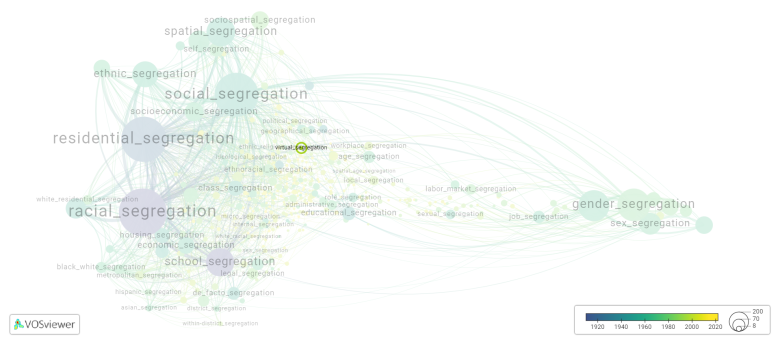Virtual segregation
Date and country of first publication[1]
2006
United States
Definition
Virtual segregation refers to the division or separation of individuals or groups within online or digital spaces based on factors such as race, ethnicity, gender, or other social identities. This can occur through the creation of separate online communities, forums, or social media groups that cater to specific demographics or interests, leading to limited interactions and exchanges between different groups. Virtual segregation can perpetuate inequalities and reinforce social divisions in online environments. It is important to promote inclusivity and diversity in virtual spaces to ensure equal access and opportunities for all individuals.
See also
Related segregation forms
Virtual segregation is frequently discussed in the literature with the following segregation forms:
sociospatial segregation, spatial segregation

This visualization is based on the study The Multidisciplinary Landscape of Segregation Research.
For the complete network of interrelated segregation forms, please refer to:
References
Notes
- ↑ Date and country of first publication as informed by the Scopus database (December 2023).
Virtual segregation appears in the following literature
Kelley N. (2006). Virtual equality, virtual segregation. Society, 43(5), 15-21. https://doi.org/10.1007/BF02687567
Thiry-Cherques H. (201). Intranets: A semiological analysis. Journal of Information Science, 36(6), 705-718. https://doi.org/10.1177/0165551510381842
Li F., Wang D. (2014). Cyberspace: Connected or segregated? Examining virtual segregation among Hong Kong Internet users. Environment and Planning B: Planning and Design, 41(2), 323-340. Pion Limited.https://doi.org/10.1068/b39010
Dorman M., Svoray T., Kloog I. (202). How does socio economic and demographic dissimilarity determine physical and virtual segregation?. Journal of Spatial Information Science, 21(), 177-202. University of Maine.https://doi.org/10.5311/JOSIS.2020.21.587
